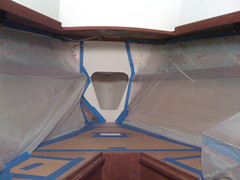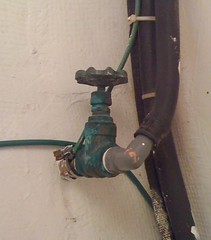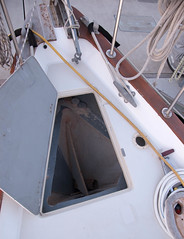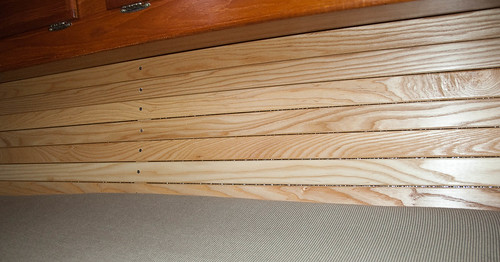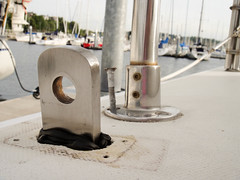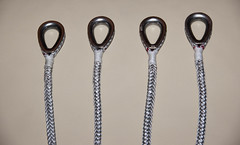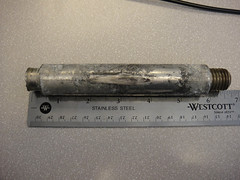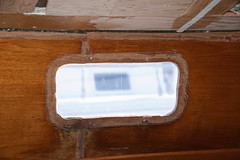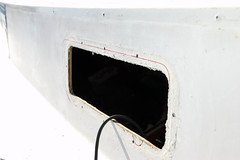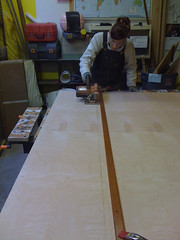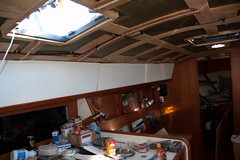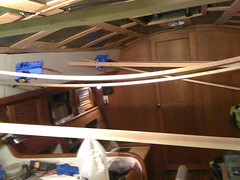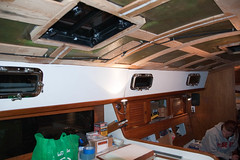Progress on the v-berth
Posted on Mon 07 February 2011 in Interior
While my clavicle has been healing Dawn has been busy as monkey working to convert the shelves along the port and starboard sides of the v-berth into cabinets. Along with that she's also been working on turning that v-berth seat that a lot of boats have into a cabinet as well. Here's a quick rundown on the progress thus far and the proces:
- First she pulled the drip rail off the shelves so the new cabinet face can attach directly to it.
- Directly above the shelf edge under the cabin top she screwed in two long 1"x1" boards to act as cleats to attach the top edge of the new cabinet face
- With that done she made all the templates out for both the port and starboard cabinet faces and the front of the cabinet at the head of the v-berth out of 3" wide strips 1/4" plywood. She takes the strips, clips them in place on the top and botom and then hot glues pieces to the fore and aft edges. This leaves us with a perfect template of the outer edges of the cabinet face.
- The templates were then taken to the workshop and we cut out the plywood pieces to match the templates. These plywood pieces will make up the front of the new cabinets. The cabinet doors will attach to these boards as well.
- The cabinet under the head end of the v-berth required one additional modification which was to route a 1/2" groove into the bottom of the normal removable seat board so it will slide over and help secure the new cabinet face.
- With that done you would think the cabinet faces would just slide right in, not exactly. Not 100% sure exactly what we're not doing right but the final boards always require a lot of sanding to make them fit into place. I know for one we didn't account for the angles of the bulkheads at either end, so in effect the board is always a hair long. She handled that by using the angle grinder to sand back the high spots until the board slid into place without as much pushing and shoving.
We ended the weekend with one cabinet face fit and two more to go. The next steps after the cabinet faces fit correctly is to determine where the cabinet doors will be placed exacltly, to cut out the holes, place the hinges and latches. With that done we will install the new cabinet fronts.
Many pics and more details to come, I just felt bad for not giving you all an update.

